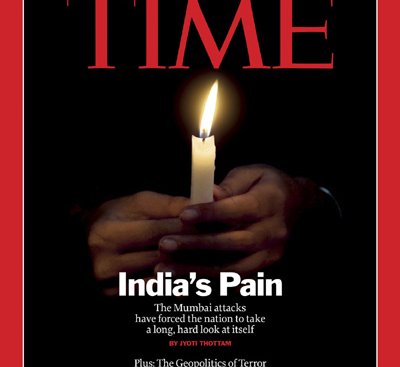
How the killing of more than 150 people made the city, and India, take a long hard look at itself
Mumbai is no stranger to terrorism. The bustling, teeming metropolis on India’s western seaboard has faced nearly a dozen militant attacks since the early 1990s, most of them in the form of explosives placed on its overcrowded public transport systems. The South Asian nation’s financial capital has thus become known for its resilience, and the so-called “Mumbai spirit” that allows it to bounce back and move on from such atrocities.
On this day in 2008, however, the gunning down of more than 150 people in a series of coordinated simultaneous attacks, by terrorists who entered from the Arabian Sea that frames Mumbai’s picturesque skyline, would make the city — and country — take a long, hard look at itself.
As TIME wrote in a cover story a week after the attacks entitled “India’s Pain”:
Today, the people of Mumbai have re-emerged. They are angry, at both Pakistan, which many believe was the source of the atrocity, and their own government. And they have awakened to a realization that something fundamentally has altered, and that their city, indeed nation, needs fixing, perhaps even a rebirth.
Most of the core social and political issues that the story goes on to describe, laid bare by the shock of the “26/11” attacks — India’s tenuous relationship with neighboring Pakistan, its treatment of its own Muslim population and its preparedness for future acts of violence — endure today.
But even as Mumbai stops to remember, it continues to question.
Read the full cover story from 2008 here in the TIME archives